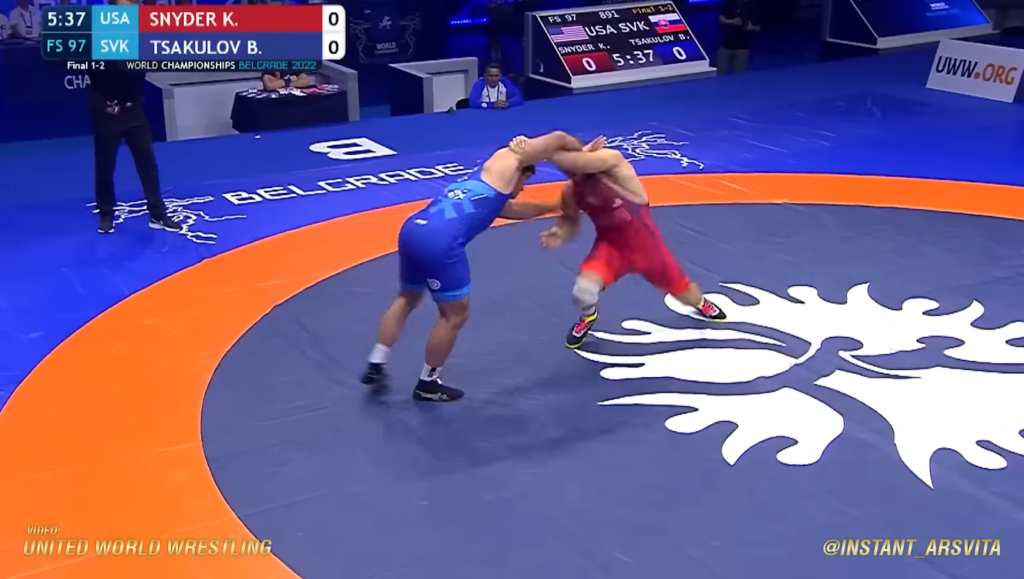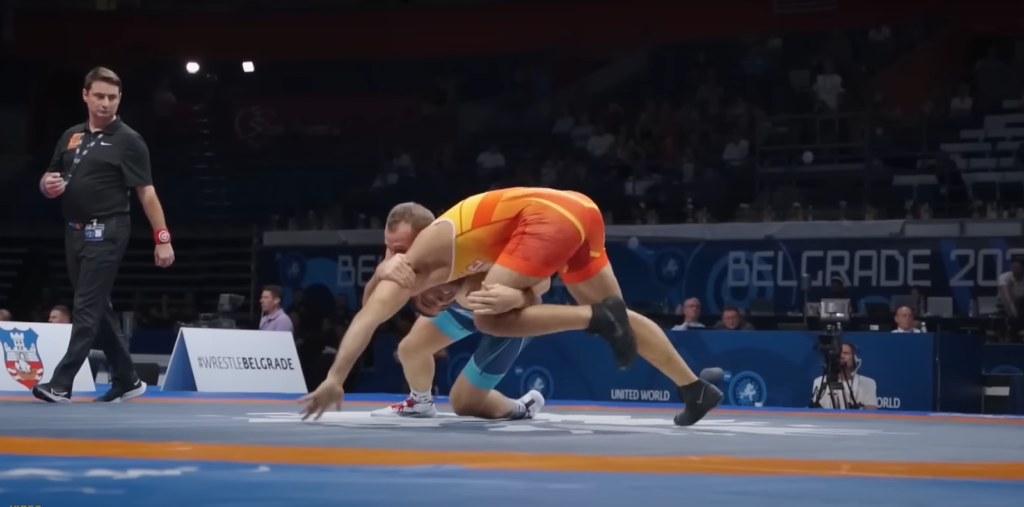Wrestling stands as a sport accessible to nearly anyone, yet the chasm between merely participating and excelling is profound. The distinction between being a “wrestler” and a “skilled wrestler” is stark. For those not gifted by innate talents, the question arises: What is the typical timeline for mastering this sport?
Becoming proficient in wrestling necessitates a commitment of at least 1-3 years. However, the journey’s duration is far from uniform, influenced by multifarious variables. These include training frequency, personal dedication, access to effective guidance, and a willingness to invest supplemental hours in workouts and practice.
It’s imperative to note the diverse styles of wrestling—folkstyle, freestyle, and Greco-Roman—which we’ll delve into within this article. Although each style exhibits distinctions, the learning curve for all remains relatively consistent.
Within the following discourse, we will explore these pivotal determinants and their bearing on your evolution into a skilled wrestler. Furthermore, invaluable training insights and techniques will be imparted, expediting the enhancement of your wrestling aptitude.
The Timeline for Developing Wrestling Proficiency
Estimating the timeline for achieving proficiency in wrestling is a complex task. The duration it takes to become a skilled wrestler is influenced by a multitude of variables, many of which have been mentioned earlier. Yet, these factors do not stand alone; additional considerations such as your age, physical well-being, and innate aptitude play vital roles in determining the pace at which you can attain wrestling mastery.
Nevertheless, it’s important to recognize that your age, existing physical condition, and inherent abilities lie beyond your immediate influence. To delve deeper, let’s explore some of the elements that remain within your control.
Frequency of Training in Wrestling
The training frequency in wrestling varies based on different factors.
- Collegiate-level wrestlers typically engage in training approximately four days per week during the wrestling season;
- In the off-season, they maintain a regimen of at least two to three days per week. It’s worth noting that these individuals are likely seasoned wrestlers with a strong foundation in the fundamentals.
In contrast, numerous high school wrestlers follow a daily practice routine after school hours, occasionally incorporating supplementary weekend sessions. For those who are newcomers to wrestling, a higher training frequency might be advisable, especially if your physical condition isn’t yet optimal. Prioritizing conditioning may be necessary before delving into the intricacies of wrestling techniques.
Commitment and Determination: The Keys to Wrestling Success
Embarking on the path to mastery, irrespective of the field, demands more than mere passage of time. The bedrock of triumph lies in steadfast commitment and an unyielding spirit of persistence. For those harboring aspirations of metamorphosing into accomplished wrestlers, the degree of seriousness invested in this journey is of profound significance. It’s important to comprehend that lackluster efforts are unlikely to yield substantial strides forward.
Wrestling, in its essence, thrives on dedication that knows no bounds. The realm of this sport is unforgiving to half-hearted endeavors. To grasp the reins of excellence, it’s imperative that the pursuit of wrestling resonates as a true passion. The endeavor calls for a commitment that transcends casual interest; it’s a call to immerse oneself fully. Should wrestling not occupy a place of genuine ardor and commitment within your heart, a moment of reflection might be apropos. For authentic eminence in this arena demands more than fleeting engagement; it beckons the unswerving dedication that elevates the journey from ordinary to extraordinary.
The Significance of a Skilled Wrestling Instructor/Coach
In the digital age, the accessibility of learning through online resources like YouTube is undeniable. While this holds true for various pursuits, including wrestling to some extent, the journey to true mastery in wrestling necessitates the guidance of an exceptional instructor. This is particularly pertinent if your aim is to attain greatness in the sport. If you’re part of a high school or college wrestling team, your options might be limited in terms of coach selection.
Nonetheless, if you’re an independent adult learner seeking to acquire wrestling skills, you have the opportunity to diligently search for the most suitable coach or instructor. Seek insights from fellow wrestlers, explore online reviews, and even consider observing the coach’s training sessions with other students. A proficient coach holds the potential to significantly influence your wrestling journey, propelling you toward the realm of excellence.
Exploring Online Learning
As mentioned earlier, the abundance of free online resources has revolutionized the way we acquire knowledge. Moreover, there’s a plethora of high-quality courses available for purchase that delve deeper into subjects, often surpassing the scope of freely available materials.
For those truly committed to rapid skill development, I recommend considering investments in digital programs offered online. A notable platform to explore is Fanaticwrestling.com, renowned for its extensive collection of wrestling instructionals spanning folkstyle, freestyle, and Greco Roman disciplines. This avenue could prove instrumental in your journey toward mastery.

Dedicating Additional Effort: Are You Willing?
Considering the duration and frequency of your lessons, relying solely on them might not provide sufficient practice. Even if your wrestling practice appears comprehensive, it remains your duty to complement these sessions with personal workouts.
Engaging in weight training, cardiovascular exercises, and reflex training is imperative to ready your body for wrestling. Importantly, these supplementary activities take place beyond your scheduled wrestling practice hours. Your willingness to put in this extra effort can significantly impact your progress and performance.
Training Methods for Accelerated Wrestling Improvement
If your objective is to embark on a journey of elevating your wrestling prowess, rest assured that you’ve arrived at the ideal destination. Within these pages, a meticulously crafted compendium of strategies awaits – each meticulously designed to not only sculpt your physique into a state of prime athleticism but also to intricately hone your wrestling techniques. These methodologies are intricately attuned to serve as catalysts, propelling your advancement in the realm of this sport with swifter momentum.
Stance and Motion in Wrestling
Stance and motion form the bedrock of wrestling techniques, underscoring their pivotal role in the sport. Devoting significant time and effort to refining these aspects is of paramount importance. A range of drills are available to hone your stance and motion, encompassing the following:
- Mastering your stance;
- Executing down blocks;
- Engaging in shadow wrestling;
- Practicing sprawls;
- Perfecting shots;
- Nailing elevation changes;
- Utilizing circling techniques.
Irrespective of age, these are essential practices that should be integrated into every wrestler’s routine. Adeline Gray, an accomplished Olympic wrestler, has produced an instructive video demonstrating many of these drills.
Effective Strength and Weight Training for Wrestlers
Team USA offers an informative article on appropriate weight training techniques, categorizing them by age groups:
- under 12;
- 13-15;
- 16+.
Numerous strength exercises prove beneficial for wrestlers of all ages. Some of these include:
- Push-ups or Bench Press;
- Pull-ups;
- Barbell Rows;
- Sit-ups or Crunches;
- Shoulder Presses;
- Front Squats;
- Back Squats;
- Deadlifts.
For adult wrestlers seeking comprehensive weightlifting guidance, Garage Strength presents an exceptional workout video that highlights some of the most effective weightlifting exercises.
Training Approaches for Wrestlers
Endurance training for wrestlers typically involves engaging in:
- Running;
- Swimming;
- Biking.
Given the prevalence of these three forms of endurance training, it’s evident why they hold relevance for wrestlers. During the off-season, it’s advisable to emphasize endurance training. However, once wrestling season commences, priorities shift toward strength and reflex training to optimize performance.
Enhancing Speed and Reflexes: Training Strategies for Wrestlers

Swift agility and lightning-quick reflexes stand as essential qualities for accomplished wrestlers. A multitude of drills are available to enhance speed and reflex response times. A comprehensive compilation of these drills can be found on Bodybuilding.com. Furthermore, for a visual demonstration of three top-tier speed drills, the YouTube video by CreightonWrestling provides valuable insights.
Curiously, a plethora of studies have demonstrated that engaging in action-genre video games can actually enhance your reflex times. This concept stems from the notion that rapid reactions demanded by fast-paced video games train the brain to process and execute precise decisions more swiftly, ultimately bolstering the speed of your reflexes. Hence, for all you wrestler-gamers, fortune seems to be smiling upon you!
Wrestling Techniques
At the core of wrestling lie two fundamental techniques:
- takedowns;
- pins.
Proficiency in these techniques is indispensable for achieving victory in a wrestling match, underscoring the substantial dedication to mastering their intricacies.
Takedowns encompass a diverse array of maneuvers such as single- and double-leg takedowns, underhooks, overhooks, and the bearhug, among others. Similarly, an array of pins exists, with the full nelson standing as one of the most renowned. The half nelson, armbar, and cross-face cradle are also pivotal techniques in this realm.
Mastery of these foundational techniques serves as the linchpin to triumph in wrestling matches.
Conclusion
The path to becoming a skilled wrestler is devoid of a fixed timetable. Rather, the duration of this endeavor hinges on a myriad of variables: your age, existing physical condition, commitment to learning, practice frequency, and more.
Encouragingly, the aspiration to excel in wrestling is achievable. The formula is simple: approach it with seriousness, invest time and dedication, and consistently engage in training, both on the mat and in the gym. Wrestling not only offers an engaging sport but also bestows a rewarding workout. Thus, even if progress takes time, the journey itself yields a multitude of advantages.